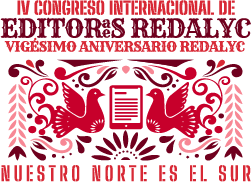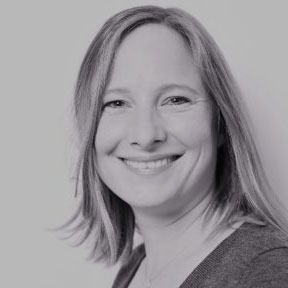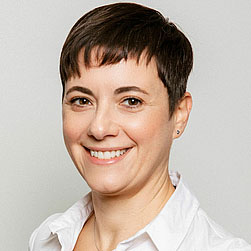
CALL FOR SCIENTIFIC VIDEO POSTERS
For editors, publishers and researchers, who want to present contributions to the non-commercial OA.

As part of the activities of the IV Redalyc Journal Editors International Congress and within the framework of the Global Summit on Diamond Open Access / Cumbre Global sobre Acceso Abierto Diamante, editors of OA Diamond scientific journals, researchers and the academic community in general are invited to participate in the presentation of their contributions in the field of non-commercial Open Access through scientific video-posters.
Redalyc, in its twenty years, aimed to provide non-commercial scientific journals with an infrastructure to improve quality, increase visibility, adapt to the digital age, and recognize the value of editorial work.
Aware of the challenges of scientific communication and the emergence of Open Access business models that do not favor equity and inclusion, it is vital to recognize the role of scientific journals editors and the contribution of editorial activity in the sustaining of a non-profit academic publishing ecosystem. Redalyc has sought to build a vibrant community of institutions and professionals who are on the front line of the battle: The editors of the diamond scientific journals, as well as the institutions that support them.
In 2023, Redalyc organizes the IV Redalyc Journal Editors International Congress, with the aim of continuing the dialogue with the main actors that sustain and consolidate the non-commercial publishing.

THE BASES OF THE CALL ARE THE FOLLOWING:
1. ABOUT THE PRESENTATION
The posters will be presented through a video and published together, with a written abstract and its version in PDF format, on the congress website. People who attend in person will have the option of bringing a printed format and presenting it during the congress.
2. PROCEDURE FOR SENDING PROPOSALS
- Abstracts must be sent from June 26 to September 4, 2023, using the following form: https://globaldiamantoa.org/poster-registration/
- Abstracts will undergo an evaluation process by the Global Summit on Diamond Open Access Organizing Committee, who will notify acceptance by email.
- Once the abstract is accepted, the authors must prepare their poster in PDF format. It is recommended to download the Scientific Video Posters Template in Microsoft PowerPoint, which includes a variety of native resources to facilitate poster tagging and editing (icons, maps, text styles, image masks to replace and download links for fonts ). A set of editorial compositions is also provided that can be combined to tailor your presentation to your needs.
- Redalyc will coordinate the recording of the video with the authors via ZOOM, who will present their poster in around 3 to 5 minutes.
- Send poster in PDF format to globaldiamantoa@gmail.com
3. SELECTION PROCESS
An abstract of the video-poster with a length up to 300 words will be evaluated, which must be accompanied by the following information:
- Title of the poster
- Full name of the author/s.
- Institutional affiliation or entity to which the authors belong.
- Email and contact information.
- Keywords (between 5 and 8).
- Specify the mode of presentation of video-posters:
- Video poster & in person presentation
- Video-poster only
The criteria that will be evaluated are: clarity, coherence, relevance, and adherence to a theme of the Congress.
4. ABOUT THE THEMES
Proposals must comply with one of the nine themes of the Summit:
system for the
public good
and diversity
and
definitions
evaluation
and
recognition
quality and
transparency
development
to strengthen
and global
federation
and Funding
and
infrastructure

THE SCIENTIFIC EVALUATION COMMITTEE
The Evaluation Committee is made up by specialists in scientific communication and Open Access.
Their ruling on the poster proposals will be final.
Scientific Evaluation Committee:

Eduardo Aguado López, Ph. D
Redalyc-AmeliCA
 México
México

Zoé Ancion, Mtr
French National Research Agency
 France
France

Dominique Babini, Ph. D
Consejo Latinoamericano de Ciencias Sociales
 Argentina
Argentina

Arianna Becerril García, Ph. D
Redalyc-AmeliCA
 México
México

Lidia Borrell-Damián, Ph. D
Science Europe
 Belgium
Belgium

Saray Córdoba González, M.Sc.
University of Costa Rica
 Costa Rica
Costa Rica

Elea Ruth Giménez Toledo, Ph.D
Consejo Superior de Investigaciones Científicas (CSIC)
 Spain
Spain

Nora Papp-Le Roy, Mtr
cOAlition S
 France
France

Johan Rooryck, Ph. D
cOAlition S
 Belgium
Belgium

Bregt Saenen, Ph. D
Science Europe
 Belgium
Belgium

Eurico Wongo Gungula, Ph. D
Universidade Óscar Ribas
 Angola
Angola

Support elements for the preparation of scientific posters:
Pérez, M. P., Arteaga, A. A. H., Pinedo, A. Á., López, M. I. P., Bautista, I. L., & Moscoso, A. A. G. (2023). Revisión sistemática del póster de investigación: ¿lo hemos hecho bien todo este tiempo? Investigación en educación médica, 8(30), Article 30. https://www.redalyc.org/journal/3497/349762819012/
Van’t Hooft, A. (2013). Cómo elaborar un cartel científico. Revista de El Colegio de San Luis, III(5), 134-145. https://www.redalyc.org/articulo.oa?id=426239579006
EQUIDADE | SOSTENIBILIDAD | USABILITY | QUALITÉ




